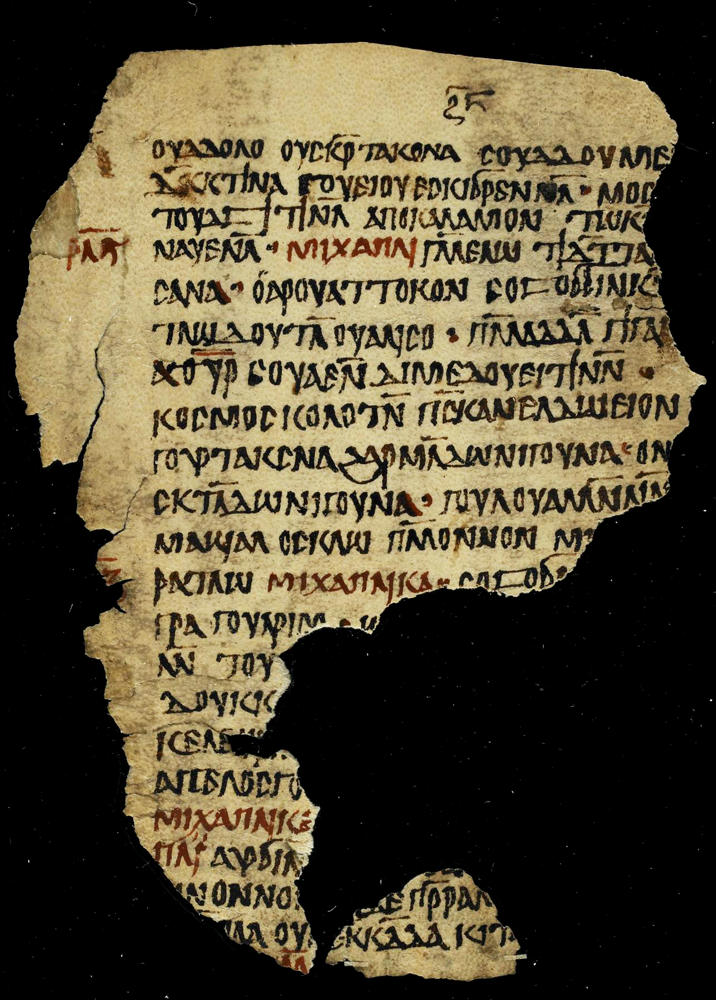The Bible is the key
Kerstin Weber-Thum investigates Old Nubian Grammar

Parchment page of book “Liber Institionis Michaelis Archangeli” in Old Nubian ( 9th-10th century) |Findspot: Qasr Ibrim, Scattered in a few centimetres of dust overlying the pavement of the nave of the cathedral of St Mary the Virgin.| © Trustees of the British Museum
How can you manage to analyze grammar of an ancient language that has left hardly any written evidence? Old Nubian is a language that was spoken in the pre-Christian period already in a region which today belongs to Egypt and Sudan. Although basic research has been done, the grammar structure is still unclear. Only texts that are known from sources in other languages can be thoroughly understood. The solution for this challenge is the Bible — one of the most widespread books to the present day. When Christianity became the new religion in this area in the 1st century AD the Old and the New Testament began to circulate among those who were able to read. At the beginning the texts were in Greek and Coptic, but by the 6th century an independent Nubian lettering had developed. Translations of the Bible were made of which we have fragments of manuscripts. About a hundred Old Nubian manuscripts have been published already. They mainly date from the 9th to 12th century AD and also comprise administrative documents. The letters are Greco-Coptic majuscules, which are supplemented by genuine Old Nubian letters. A central role play the manuscripts found at Qasr Ibrim during an excavation campaign prior to the building of the Assuan dam in 1964.
Kerstin Weber-Thum, doctoral fellow of research group (C-1) Deixis and Frames of Reference, chose to concentrate on terms that describe space and time thus featuring the central aims of the second funding phase of Topoi. For example, pre-Christian Old Nubian obviously had no corresponding word for “eternity”. Its meaning was represented by the term “up to the border of times”. The texts chosen for the investigation will be digitalized, followed by software analysis to establish a comparative system where terms and words can be grouped in indexes under semantic and contextual aspects. The results that can be expected from this investigation will not only help further comparative linguistic studies, but also research on the Bible: The importance of Old Nubian Texts is hitherto underestimated by theology. The manuscripts supply rare or unknown versions of the original Bible text, or such important evidence as a variant of the 2nd book of Enoch, of which only one other version exists.
RELATED LINKS
Personal profile of Kerstin Weber-Thum
Research project: (C-1-X-4) Ausdrücke des Raumes und der Zeit in übersetzungsnubischen Bibeltexten
Read more articles in TOPOI FEATURE
